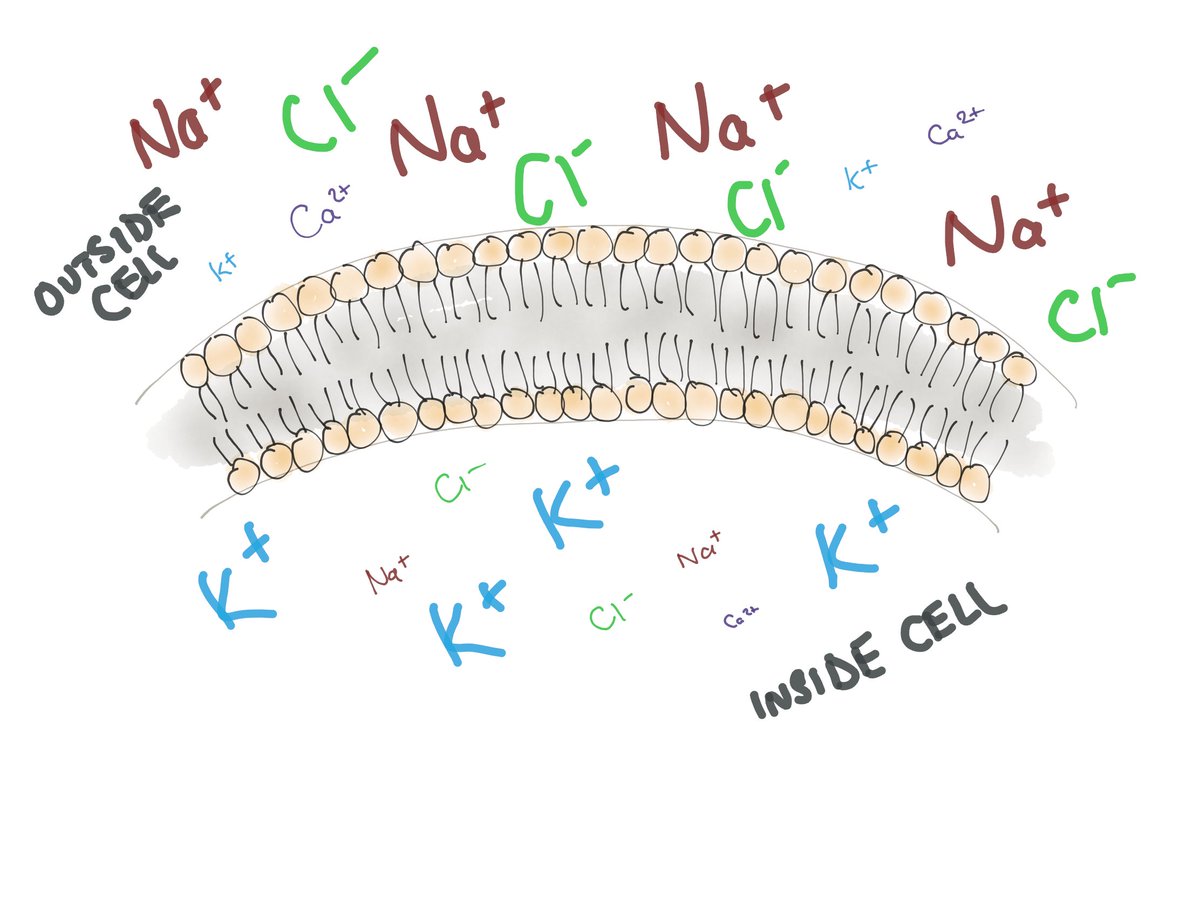Talking about pollution though, it is the target of such pollutants that I& #39;ve been studying for much of the last 10 years. That is a protein called TRPA1 from a family of TRP channels. TRP stands for the very unsexy: Transient Receptor Potential family. But what does it do?
Lets start with how cells are basically bubbles with a fatty membrane round the outside. They have a watery solution (cytosol) inside containing all sorts of biological molecules like DNA, proteins etc, and ions of elements like sodium (Na+), potassium (K+), calcium (Ca2+) etc
There is a similar watery solution outside the cells, but the levels of the ions are different. Since they are electrically charged, they cannot cross the membrane into or out of the cell without help.
This is where we meet the ion channel. Consisting of one or more individual proteins, they sit in the membrane forming a pore between the inside and outside of the cell. Under rest, they are usually closed but there are various signals that cause them to open allowing ion flow
Cells at rest are negatively charged inside with respect to the outside. The TRP channels, I work with, allow positive ions Na+ and Ca2+ into the neuron. So when they open up they make the inside of the cell more positive.
Once the inside of the cell becomes positive enough, a different set of (voltage-gated) ion channels open up triggering the electrical impulse we call the action potential. This transmits the signal from the airways.
[gif of ion channels being activated in an action potential]
[gif of ion channels being activated in an action potential]
TRP channels can& #39;t trigger action potentials themselves, so you can think of them as the hype-channels. They get the signalling party started.
[gif of a hype-man on stage calling out to the audience]
[gif of a hype-man on stage calling out to the audience]
I study TRPA1 (wasabi receptor) and TRPV1 (chili pepper receptor). These are both chemosensors. They sense the active components of wasabi (AITC) and of chili (capsaicin). TRPV1 also senses heat.
We can study what happens when these ion channels open using various techniques
We can study what happens when these ion channels open using various techniques
This video is of the cell bodies of neurons from the vagus nerve. Cells are filled with a dye that changes in intensity when it binds with calcium. They start off a cool blue but as you add AITC (0:07)and capsaicin (0.10) you see the cells light up.

 Read on Twitter
Read on Twitter



